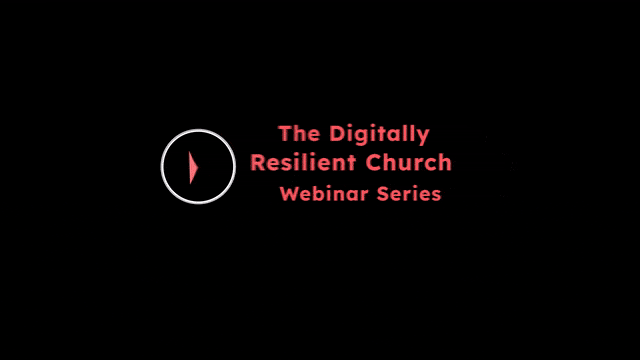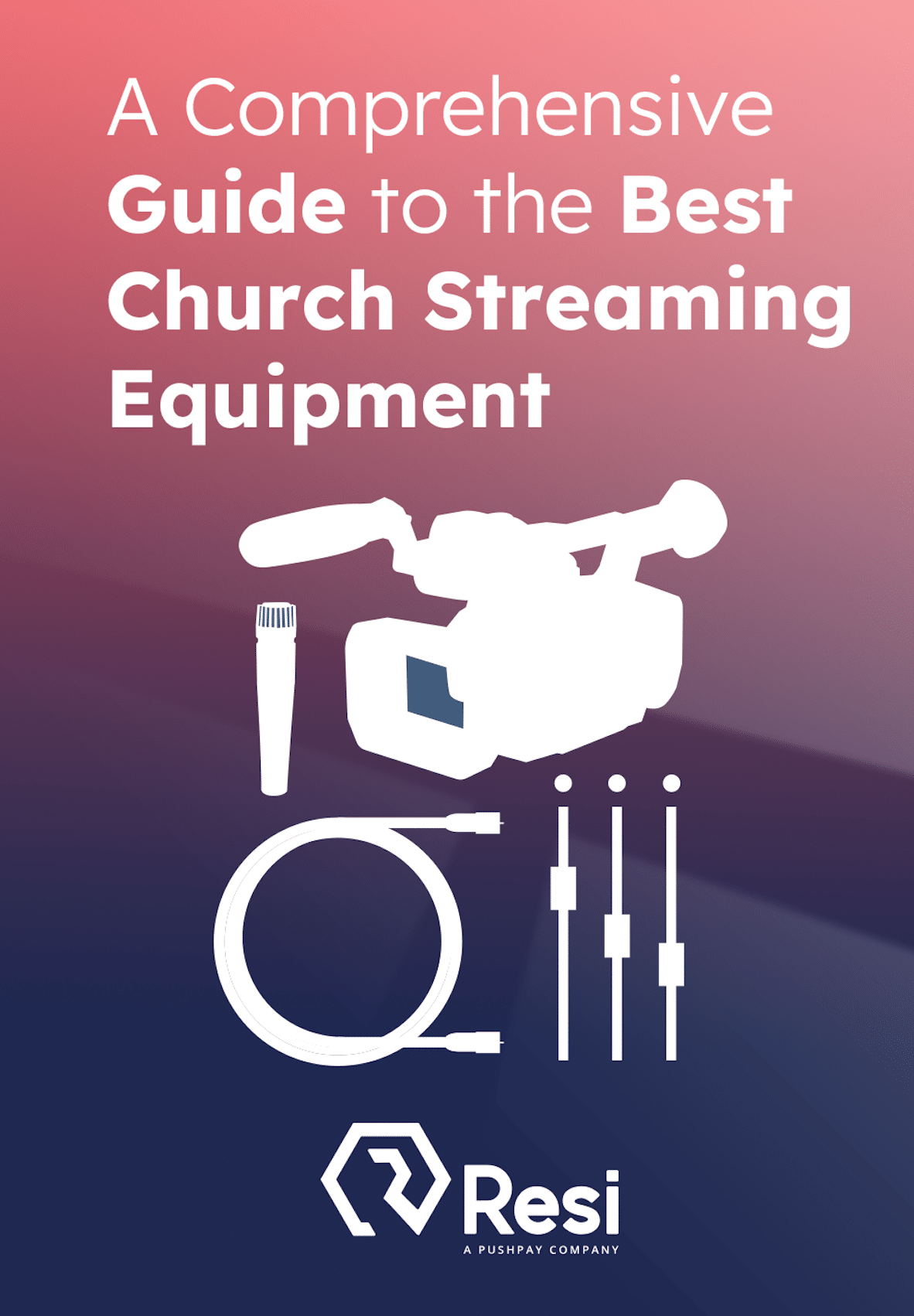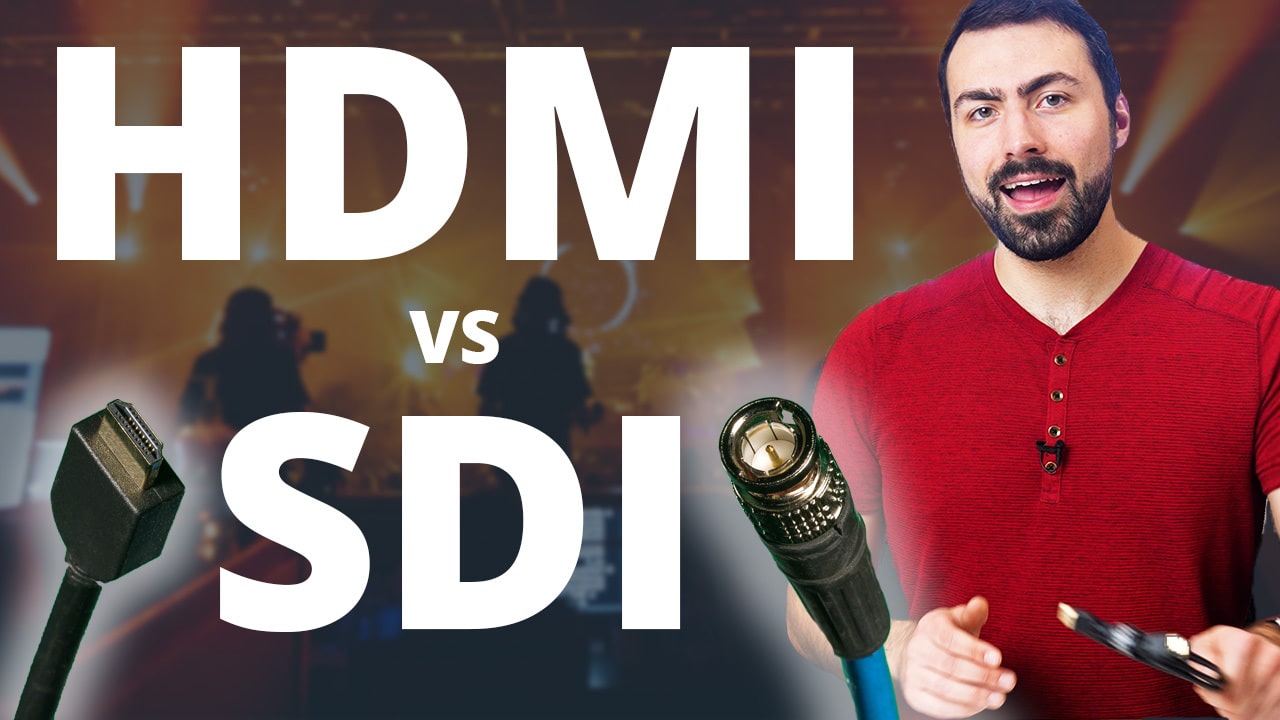
Anyone who has ever been part of a live streaming or broadcast production knows how vital having a strong video signal is. Whether you’re dealing with confusing adapters, unstable digital video transmission, unexpected glitches, or more, situations like these can be the first sign your stream isn’t going successfully. Luckily, one way you can help ensure a stronger signal is by investing in the proper video transmission cable.
By watching our video below, you can learn everything you need to know about buying the perfect cable for your video production team, including the different types of video standard options, the pros and cons of each, and how to create an optimal SDI setup with some of our best SDI accessories and camera accessories. By the end of our video, you can feel confident that your next digital video interface cable will establish a stronger SDI signal and help your streaming device deliver better performance.
Types of Transmission Standards
The two types of video transmission standards are Serial Digital Interface (SDI) and High Definition Multimedia Interface (HDMI). Both standards function a little differently and can offer different strengths that may be useful depending on your camera, broadcast, or professional streaming needs.
SDI
Developed in 1989 by the Society of Motion Picture and Television Engineers, the SDI standard is a digital video interface that transmits uncompressed digital video signals and embedded audio signals between devices. Its transmission process works through encoding digital video signals into packets of data called “cells.” These cells are sent one by one down a single coaxial cable—typically an SDI cable with a BNC connector. Because the signals are uncompressed, the video and audio remain intact throughout the transmission, making SDI ideal for high-quality recording and streaming.
HDMI
In contrast, HDMI was developed in 2002 and is now the most widely used consumer video cable. HDMI cables are often constructed of two wires twisted together—one carries the original HDMI signal, the other carries an inverse copy. Once decoded, the receiving device compares both signals to restore any degraded data during digital video transmission.
Pros and Cons
While the differences may seem small, choosing the right video format matters. Let’s break down the pros and cons of each digital video standard.
SDI is considered the broadcast and professional streaming standard. Higher-end SDI equipment often includes only SDI inputs, SDI ports, and SDI output options. Known for high-quality video transmission, SDI supports longer distances with minimal signal degradation. SDI connectors and SDI connections often include locking mechanisms to avoid accidental unplugging—ideal for live streaming and mobile rigs. However, SDI is unidirectional and can be costlier than HDMI.
Best Livestreaming Equipment
Discover what top-rated equipment we recommend adding to your church streaming toolkit.
Download for free!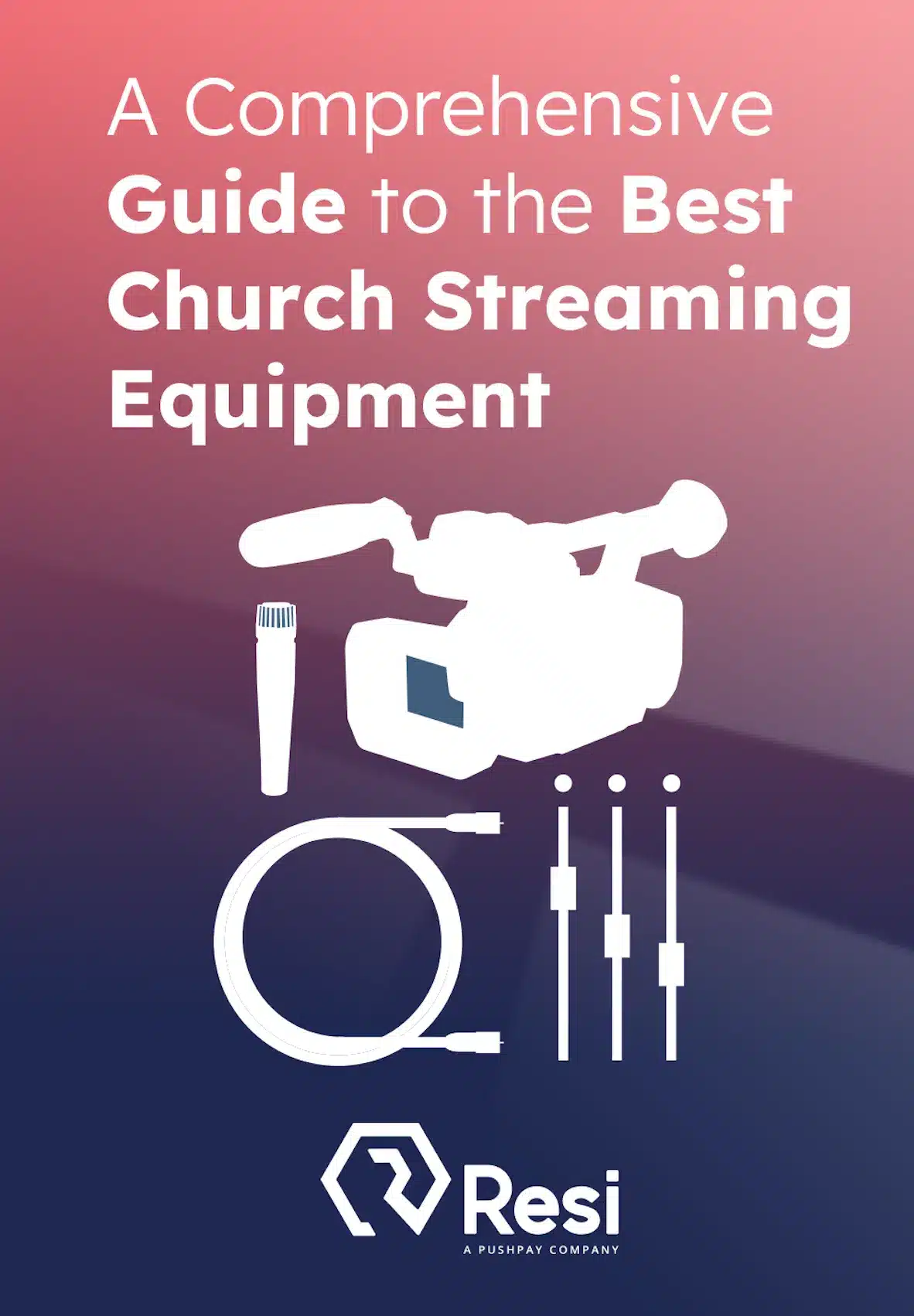
HDMI is the most common consumer-grade option and is more affordable than many SDI device setups. By using compressed signals, HDMI cables require less bandwidth during video transmission, making them ideal for streaming devices with limited processing power. HDMI connectors are bidirectional, allowing capture and playback devices to communicate and process multiple video signals. However, HDMI’s lower video quality and lack of support for longer distances without boosters can be a limitation.
Another noteworthy standard is Optical HDMI, which uses lasers to transmit data rather than copper wiring. These HDMI cables can match SDI in transmission distance while maintaining speed and clarity. Despite being functional for long runs, Optical HDMI does not support 8K video and is not bidirectional.
Clean vs. Dirty HDMI
A quick tip for those who are transmitting video signals from a camera’s HDMI output or SDI output—make sure the output you’re getting from your camera source is considered “clean” HDMI or SDI video, rather than “dirty.”
A clean digital video signal is one that only includes the video and audio data, without additional overlays or camera controls. This is important for live production and video content creation, as it ensures that only the intended high-definition SDI or HDMI feed is transmitted.
In contrast, a dirty HDMI or SDI signal includes menu overlays, settings, and other non-essential information. This can clutter the video format and interfere with graphics or text layered over your broadcast.
To ensure a clean SDI or HDMI signal, check your camera settings for options that output clean video. Some devices have dedicated menu options or buttons for this.

Equipment Suggestions
Now that you have a good idea of what each video standard can offer, let’s cover our top SDI and HDMI-compatible gear suggestions for building the ultimate professional broadcasting setup:
SDI to HDMI Converter
Blackmagic Design Micro Converter SDI to HDMI 3G (with Power Supply)
“This pocket-sized SDI to HDMI converter features a sturdy metal housing with power and signal LED status indicators and rugged connector interfaces. A USB Type-C port enables the SDI to HDMI 3G converter to easily connect to and be powered by large-screen monitors, laptops, desktop computers, or projectors. You can also power this converter using the included 100-240 VAC power supply, complete with four international socket adapters.”
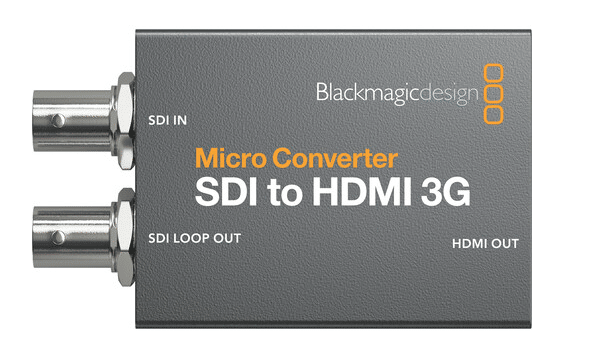
HDMI to SDI Adapter
Blackmagic Design Micro Converter HDMI to SDI 3G (with Power Supply)
“The Micro Converter HDMI to SDI 3G from Blackmagic Design enables you to link HDMI cameras or computers to pro-style SDI (BNC) monitors or components. You can also use several units to extend HDMI over long distances using SDI cable. This compact converter has one HDMI input and two 3G-SD/HD/SDI outputs that can be set to Level A or B. It auto-detects and matches your HDMI input to the SDI output and is compatible with input/output resolutions up to 1080p60.”
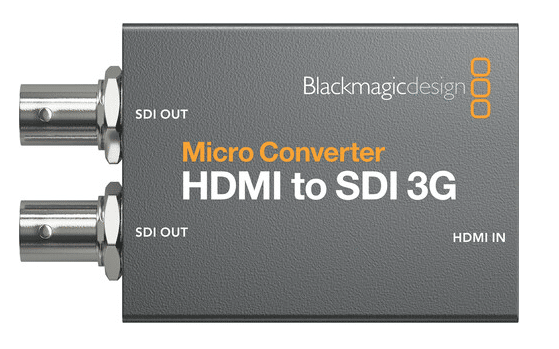
3G SDI Cable
Kopul Premium Series 3G-SDI Cable BNC to BNC (100 ft)
“Made with high-grade RG6 cabling and gold-plated Neutrik connectors, this 100 ft Kopul Premium Series BNC to BNC SDI Cable is designed to transmit a clean video signal end to end. Featuring a PE-insulated OFC conductor with foil and dense braided copper shielding, the cable ensures minimum signal loss with exceptional protection against signal drop-outs and RF and EMI interference. A rugged SuperFlex PVC outer jacket provides high flexibility and durability.”
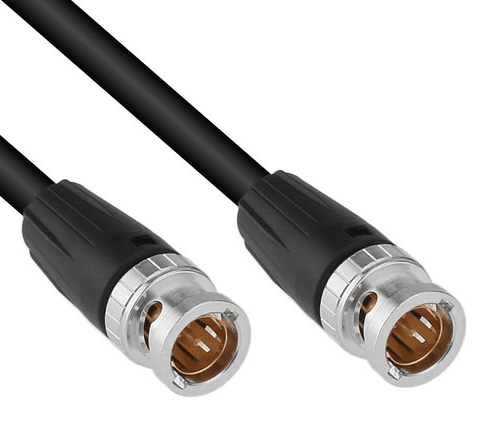
12G SDI Cable
Canare 12G-SDI UHD 4K Single-Channel BNC Cable (100 ft)
“Canare’s 12G-SDI UHD 4K Single-Channel BNC Cable, 100′ long, is designed for connecting 12G-SDI rated cameras and equipment and carrying a UHD 4K signal. The cable features nickel body 75-ohm connectors with gold-plated contacts and highly foamed PE insulation for optimal attenuation. It’s suitable for studios, mobile trucks, and installations among virtually all other applications.”
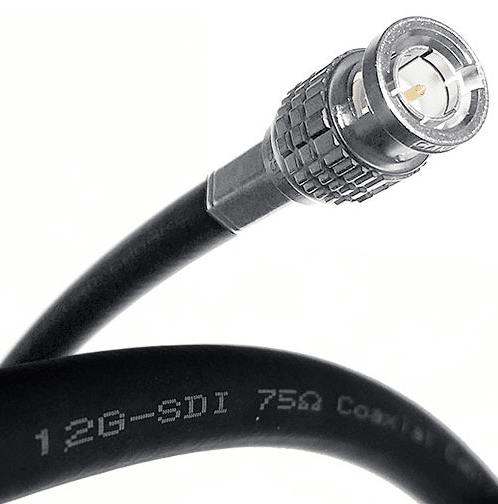
HDMI 2.0 Cable
Kramer High-Speed HDMI 2.0 Cable (15′)
“Connect your HDMI-compatible devices with this High-Speed HDMI 2.0 Cable from Kramer. This 15′ cable has molded HDMI connectors at both ends that are designed to resist erosion while providing reliable connectivity. This cable facilitates an uncompressed digital connection between your compatible electronic devices and display monitors—for example, connecting a Blu-ray player to an HD television.”
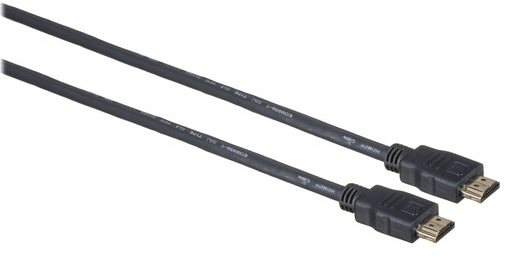
8K HDMI Cable
Elvid Hyper-Thin 8K Ultra High-Speed HDMI Cable (3 ft)
“The 3′ long Elvid Hyper-Thin 8K Ultra High-Speed HDMI Cable is ideally suited for connecting devices together, such as a cinema-grade camera or drone remote to a video monitor. Its versatility comes from its support of the HDMI 2.1 specification. This provides up to 48 Gb/s of bandwidth, which is more than enough for transferring Raw footage at up to 8K. Speaking of 8K, it also supports video playback up to 8K at 60 Hz, or 4K at a smooth 120 Hz.”
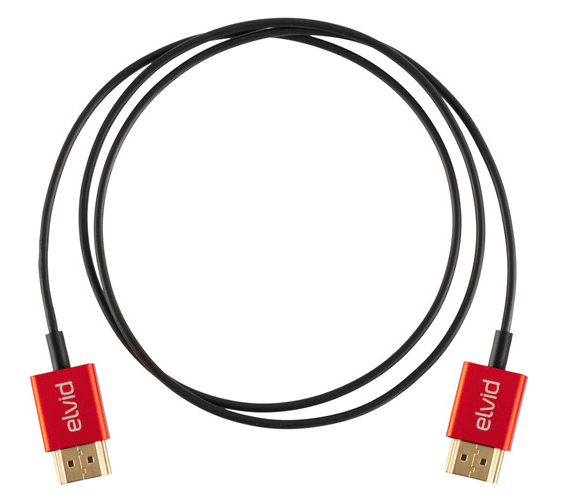
Optical HDMI Cable
ATEN VE7833 Premium High-Speed Active Optical HDMI Cable (98.4 ft)
“Connect your high-resolution source device to your compatible display over a long distance with the 98.4” Aten VE7833 Premium High-Speed Active Optical HDMI Cable. It supports resolutions up to DCI 4K, plus HDR, Dolby TrueHD, DTS-HD Master Audio, and more. It uses fiber optic wiring rather than copper to support long cable runs and help reduce EM and RF interference. The cable is powered by your HDMI device or an external USB connection and includes two USB cables.”
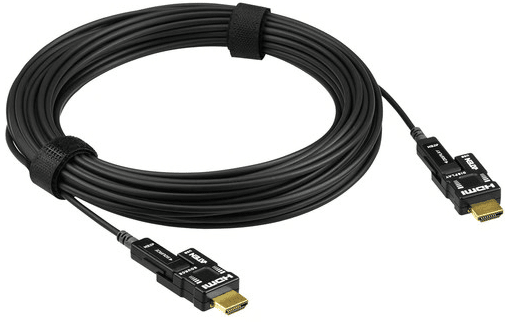
Video Encoder
The RAY is a small-form-factor encoder for Resi’s Livestream Platform that’s ideal for affordable and portable encoding. Now you can get the power of Resi’s Resilient Streaming Protocol in a smaller, portable form factor! The Resi RAY encoder is a fantastic option for portable churches, traveling speakers, micro conferences, classrooms, and more.
Taking Back Monday: A Church Tech Director’s Guide to Saving Time
With this resource, you can take back time on Mondays and focus on what matters most—serving your ministry.
Download for free!
At Resi, we believe the optimal video transmission standard is SDI. This option offers professional broadcasting-grade video quality, is compatible with industry-leading SDI equipment, and includes locking SDI connectors for added stability. That’s why we’ve made SDI input standard on our Ray and Pro-grade Encoders.
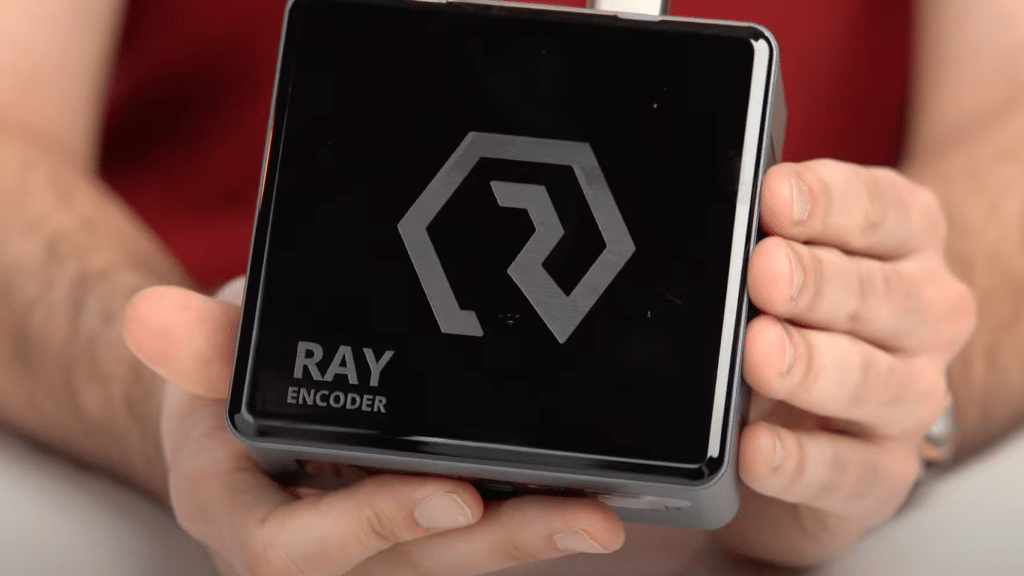
We hope you found our video, as well as our list of SDI technology recommendations, useful for your next broadcast purchase. Be sure to evaluate your current video production setup before investing in any gear to ensure compatibility and performance. If you’re interested in learning more about video formats, digital video interfaces, or Resi’s technical support, browse our additional resources or contact our Sales Team to discover our range of broadcasting solutions.


